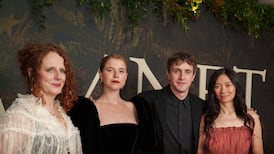The sun was high in a clear blue sky when I climbed the narrow stair just inside Jaffa Gate to a window where, for $2, I purchased a ticket permitting me to walk atop the walls of the old city. Built between 1537 and 1540 by the Turkish Sultan, Suleiman the Magnificent, the great architectural benefactor of the Holy City, the walls stretch for 4 km and are pierced by seven gates.
As an elderly couple speaking Hebrew to the Palestinian manning the kiosk and a clutch of cheeky schoolboys made their way to the Citadel, known as David's Tower, I climbed the flight to the ramparts and found myself in sole command. Stepping up to a triangular vent in the thick white stone wall for archers to fire during a siege, I peered down on traffic flowing along Jaffa Road and the restored Arab houses of the Mamilla quarter which, before Israel captured East Jerusalem in 1967, lay in no-man's land between Jordan and the Jewish state.
On my left was the new "Jewish" city, on my right the Christian quarter within the hallowed walls. Before me a daunting up-and-down route of smooth rounded stones, steep steps and occasional iron ladders.
In a courtyard beneath a rectangular canopy, a dozen working men sitting at a long table eating a late breakfast or early lunch. Next came the red tiles of the roof of the Casa Nova Hospice, which locked me out on my first night in the city long ago, forcing me to stay with Palestinian friends who had taken me to dinner in a garden restaurant in Ramallah, now the Palestinian Auth ority's West Bank administrative centre. The basketball court of the Christian Brothers' College lay empty, the bells of Saint Saviour were silent.
I crossed New Gate, looking down into a busy little square with shops well stocked with bright red apples, bananas, orange lotus fruit and faded green custard apples. A barber shaved a customer sitting in a patch of sun. Little boys at a school hooted when they saw me above them on the walkway.
A confusion of squat Ottoman domes, satellite dishes and cylindrical water tanks and solar panels, of laundry lines and television masts. Tall, gloomy cypress trees in a seminary garden. A Christmas wreath with a crimson bow on a door of a small stone house. Just below me washing, the homely smell of wet cloth and soap. A mud-plaster house with purple shutters and red satellite dish. I stepped up to a dip in the crenellation and surveyed the cars streaming along the wide street.
Down in the garden which runs round the outside of the wall a platoon of gun-toting Israeli soldiers hurrying somewhere. From the top of the wall I have a "rear window" on the activities of everyone I pass. Only children look up from what they are doing to "marhaba" or wave; adults are too absorbed in their business.
The longest single stretch lies between New Gate and Damascus Gate, or "Bab alAmud", the "Gate of the Column", which is the main commercial gate of East Jerusalem, the largest and most splendid of Jerusalem's entrances, the start of the road to Nablus in the north. Outside lay the steps which form an amphitheatre leading down to the gate. Sitting on the pavement displaying their wares are women in traditionally embroidered Palestinian dresses identifying them as being from Jerusalem, Bethlehem or Ramallah.
Children with swinging school bags. Men carrying parcels of fruit and vegetables - here men do the daily shopping. On a flat roof just inside the gate sat three Israeli soldiers monitoring the scene below. An old man frying chickpea paste rounds (filafil) in a cauldron of oil; shops, boys bouncing laden metal barrows down the steps towards the souqs. All the old city is pedestrianised - except for the barrows and the little tractors which haul produce.
ONWARDS to Herod's Gate. The traffic along Sultan Suleiman is deafening, particularly opposite the Nablus Road bus station. Opposite the low gate, hung with coloured lights to mark the Muslim fasting month of Ramadan, the massive post office and Salah-ed-Din Street, the main thoroughfare of Palestinian East Jerusalem, clogged with cars and buses.
At the corner, the handsome facade of the Rockefeller Museum, which housed the Dead Sea Scrolls until the Israelis carted them to West Jerusalem within hours of the occupation. Inside the wall a kindergarten, the Church of St Anne enclosed by its garden. Outside the venerable headstones of the Muslim cemetery, the Jericho road.
The vista of the Mount of Olives with its churches, a glint of gold from the basilica in the Garden of Gethsemene, from the onion domes on the Russian Orthodox church. I stand within the embrace of the tower above Lion's Gate where the Via Dolorosa begins. Between spires and mosques, scaffolding, pent roofs, the glowing curve of the grand Golden Dome of the Mosque of Omar. Church bells mingle with multiple calls to prayer played like a Bach fugue on the minarets of the most wonderful city in the world.











